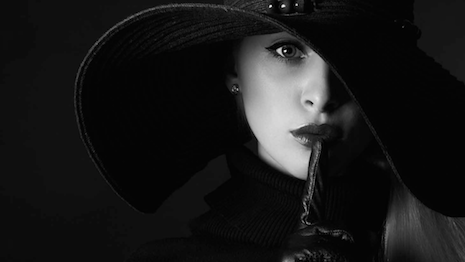By Laurent Bludzien
Sexiness today is one of the first factors representing luxury for customers, a change after many years in which the material quality, exclusivity and artisanship were the key factors. Consumers seeking sexiness are mainly millennials or under 50, and equally distributed by gender.
The luxury goods industry has entered a new cycle in the last two to three years, characterized by moderate growth – 3 percent to 4 percent per year – and a greater heterogeneity of performance among major brands. This new cycle has affected all product categories, from personal luxury goods to high-end wine and experiential luxury goods.
The strong growth in casualization, the reduction in opportunities to use traditional formalwear, the extreme attention to the experiential component of purchasing, and the propensity to mix and match by all types of consumers are manifestations of a deeper evolution of taste and expectations.
New sensuality
Today, the key word behind all of the great growth stories, with the exception of one or two French luxury brands that occupy a timeless position away from fashions and trends, is sexiness.
Sexiness is the ability to express a new sensuality that is imaginative, intimate and delicate, and the ability to do this with a clear break from the canons used in the past 20 years — a clear break that may sometimes be provocative, able to capture the imagination of consumers and bring new ones closer to the brand.
The brands that understood how to ride this evolution first have seen their like-for-like performance grow by double digits, especially thanks to the increased number of consumers of their brands. This formidable growth has not required expensive revision of store concepts, restructuring or large retail openings, but finds its own push in the product and the way of communicating it.
In fact, as far as product is concerned, sexiness is the ability to leverage iconic pop products once not considered in the high-end world, such as sneakers, T-shirts and backpacks, making them the platform for the new concept of luxury.
Sexiness also is the ability to develop new and unconventional shapes capable of provoking and intriguing thanks to the use of researched materials, finishes and creative effects.
Communication has shifted from traditional media to digital and includes more immediate, flexible and tantalizing forms of communication able to put the consumer and the community at the center, instead of the brand and the product.
Digital revolution
Today, more than 60 percent of purchases are influenced by digital, whether consumers are looking online and buying in a physical store or directly online.
Word of mouth continues to be the first lever of influence for the luxury consumer and today occurs for two-thirds through digital platforms, and more than 70 percent of consumers connect to their favorite brands through social platforms.
This digital revolution not only allows luxury companies to amplify their vision and message but also contributes substantially to the sexiness effect of the intimate and personal nature with which it takes place.
Today, the relationship with the brand must be increasingly transformed from a simple “transaction” to an appointment — a love affair that takes place in a fluid way between physical and digital channels.
COMPANIES LESS RECEPTIVE to these changes have seen their performance worsen and, in some cases, witnessed a contraction of turnover despite their historical heritage and a product of absolute quality supported by a strict “made in” label and major investments to support communication and sales channels.
It is clear now that being a well-known brand with high-quality products is no longer enough to succeed.
Please click here to download the EY report titled, “Luxury is About Sexiness: The Luxury and Cosmetics Financial Factbook 2018”
The report combines publicly available data with input from leaders who work with the world’s leading companies in the sector. It looks at market trends, the evolution of operating aggregates, key financial parameters and valuation ratios. Also in the 2018 edition of the factbook, you will find consumer insights and contributions from sector leaders about selected topics of interest for the luxury industry such as innovation, sustainability and digitalization.
 Laurent Bludzien
Laurent Bludzien
Laurent Bludzien is regional managing partner and vice-chairman of the board of directors , EY Switzerland.
Reproduced with permission from Luxury Society, a division of Digital Luxury Group. Adapted for style and clarity.
{"ct":"1LN5PKm5fhZbZ2iuyv7paqmXdqcfDY8IEoWCsEiJBYa2WUSBIMNqvrvfmFEX8Pg2szbWKQCbHsq+RIj9rK7oMGMMHQ583UQSfB\/a06IMUV9RzkeDa4ReEpmJTclr0SRRXehN\/gptq8jaFDOw0iwBop\/+oBmfzcYA+AKVGXlvpKSSfCsuMGS6Vh+zVW83ULuSSL8U8f8Y497waJ2ljflTKEHZRMfKyjMAIuV2cJFQIyHFNc94bUPTlBBxA5UHgvKL318HzIaD7vUIAza9pK1rBOPmWvz0CV3hM+a8ISNLB\/rHPnCQuMmTdggJokowKluSWEQh0iwG6TSL1xhJ84C5lKIKXIA3vxY+nLalvxbxYfgK2fLR2MB5mruG0ItENZ7jCnIP656478Iwy8MZT981qdOJIZ4B8y7nSha4MZr\/3VtYrmOgnTTKvCRdJ\/AIS8YN7l654ebFHsrMerNBM33bq\/IHrG8w\/bOk1YI4NXZZIi9lnclNcgOkk\/fO+s9sobnRXw1tP\/MGeiis5PHo17VVik2kiJMX1txOc2P4TT8YfrRXQ1te7mX3rQnDTDVyIHVMD1C\/8o+mO\/o826zD0bdL2K7RPt4xPd3ktznWki2ReTWcfehWzxZM704F+GFdGWCahZBrLj1HJslLLec6li7hyQSVXSfaj9jwI6dHcEDjejNQHbqaGLogm80RLa0g\/SVLuk2JgsEBikg9b3NKD9t+PCdnSiYbOVr5lFpBw9g7J09sVkOQPjcUmjUUlCubI5WOSFW6D4kezM8HH5DjiFr9YdcQLnXvtfzGNVi1bgQFM+\/fVEAsSJ2lN1hfFHxWJtFv8N8bLomgNYv33A72IPNdl5FZZXSxJYuIkAlIOYc3\/QnKp2hOPdl4Zbi9OV6lo47kPP7J0pxGqriBvebkTkmKBaTzS2PDe7MBjZpjfp5FV6u3umj39ILaOhyX+qh6vftOlan934VfzwFRCb49Y6CSMPIXAtvKfJsg2IlP3sxGGjSQrXVQzM0I2zLGFo5pgFfTryOM7fxxdQ7d6kMPMZpPHrTfhR5++kfpIl7OdoQuE4gRcDNBkahwy3NNqch6R+2deCA0ki3uENyOpFw79pfyrujXChvhHTCrxl4SL+p25RmMlcV9zBMOJY2iMXM12SsdpvOwVUoi1PDy0tkEvXwcC63OeW4+Uh6Xr8ldbnBP9NzctHvd+cFY1iv1HvIef0El8fYj78wdMtjC8vPT1X1AqJfbnAteIkp4Q7NUbOnfrIESeEtutThG3f9fG7InLxw4BCqaV9eISmE+swjXAhrybRnIBlLC0I7Iu7qJtNaqw\/cgiJpcOqi\/rKpKMmSFihXZuRhNFbHiU1zjgmsjvHLHQ99fM62JaqOzrybNhTM5Ftupq9+8Obpqx23N\/0NQhEhc\/HJKH54sqkBOTpIhANLP63tZ\/41bkIBHOpUc3jLvLd+DoS5bVc3SIOyXjrKp3DrNigUFRYoTNQedBTctFCQNQIizfnDEVQ1J0hKuEbxSg\/d9qpmsyx7O60\/CksNoH\/anOZ1D8qsKaqg9phlCKx6umuLjVLySPXCLKaJ08TMjo0oQV9B9o8ZSWWMun01U7AG1zVwiJgB2V786Fkip823gJ6XJomB4YOshZWDCO\/cdffXXskXUSI0lBhstYjoBKU10hgtK6SQvKoLbxM1PsluDYOtoP6D8td7hR3Tt4lDLsVqomjWGe1HERD9y01MmLg\/asFxugv5HT2TPw4OhQCYMZVuOQ0l89BLjpHN9vaaqFvQ39BiCY\/JxSuOkt9x0ccyxgllSxS9N5A667v0I6U70VQYLkH1WE5tPTurWnZNEZJHu2w9BGFGSt+1aP41DVIuSAjxx2xZzh6cCGiqEgAReXxr+Jq\/j\/s5\/LYJ8KSjYZBBiHV3RVH0xRmxDdptQzlzUeaDomJePAe0ZM4U3IAXWect4N2ow1GPk+JpyuSyHKmkLQQa45AFa7B9P6rPWS0yBsekT1necyK6Zhf6\/bZNhiLbS5y\/+8qvQMK34YvC0QdEo8LlU31Iqg50wGC1TVTHaZpPCgR8v9pBXYRGTsMB2tRPNA3gUkxVa0KANzzYNS9iSBfT+S2Rf0xCrJ3DOxNe1EKL\/T9PA3qgCrmXdpK1Oo7iUPKuSHsMKEv4XbUBkZtf6tBUT+vtMYyUNXZpGQqpPJTVWU3nHBW0+bf6U6C1JfE6a4na6kDsmGTpgnGKkufO0DWsb0yJjQHeqB8vJxY3cWm5ZyAEL+g+Qn6zTLVoPIzV2+W3RR2s6hI0RxLhcNj\/2U0rm3wFpxJGtD2iOeh0RYoMke6xSCBNTnt0B4u19P4Rt\/OO9cXdE7Q69qi30ZMrqtbhogVI756X7LzB5IDpwN9ZiEhESO2W5JG0827d2EfeOBaIxSTE+DpREyzsTt\/StIgbjAgoC7SKppwwsqnp71WeBiYzUTkXf7L4PJGW5LpdyM30FcOXcFiAfjBUfqkHSPBKYK9ylv2RPZKbWaWWSZenDL+FR3QyMLk1h3a6AmSE0xIZr7QUMYaKnqdR7FwiUR6ZhtpLXttWVLoJtSuRNya6\/VHS\/x7QR1QxUvOhrU97wrmJ6Ksh7hMjj0v\/idYOrrABnHJF9IT0oiSOYgrPW5nQuveBZoOz+6E9B3WhdFMgGcCS4oSRiDq3yaWAqikAg1mCViqbGSyliw5BWi\/XSvA0aa+vMwzJ9ag3Bqb\/83U19mEl0qSXnlSlJsWPuQl2yAREm+WbUpnyalEzNmnzZxvSYIPdakesyLndRm5MltJYUGbEzLS95lH4Xuhm\/yfIdxu+1kErBFCxCPPQv0M2wslC7\/f4HoDlsmLuNJ+YZgw7zcDs+J+4HdsB2F0djE1qbq2YAlpkOErUnOy9QQEj+838bcAcklyin3QP1MYOybqyyh1WOyjnplrKOfj\/BknEMdgQWPlilVF+RHfdF9sFS9PMGW6\/QIJuu5yfRurmqavMiOY1H6KuvFA3zGoMqONnKIZTPf21Vh5l79DRM2UY+jPpwjVDJzt1nbSDmWLWlj1G1sKf80wua3Osn6KkWZOl+D0BLvm3nccKmtjv2IKNEsA8lmkaPjGQZB1GOsny18kLR8Djjt0DGP+VrVP4wRwFdXU09CqXR3okAX9raOnWoD8shtKCxwl6fiC7NSrMiVr6D01\/jSh\/1XqjzS0eS\/QuFOYOfjz2lrb1A\/Ev0JJ\/EwkTE0Ye\/WWmdEGw5zfO2FbhM9HRZ3sxRcEB1iyCPRVhFhplQFrLzcCn3RgvVO1E5VtkcuzaUrrySNZL+mnXChlfZknr\/iDOJrA6JJKoEld5gMjB+MaOrbjYWhXB0ONGrUQuBRIct+Uur2gU73xHWe6PZqHr2kfh4jjZiq7h0kY\/qdQIi8NfrQw+fQ\/FD+9+o9Pb86byz0Wv5z2SiKx6BRqSCGXipOOElrpqUe4VWMPZ\/IGumqFdK3RhRKgVrsoOXteUje\/bRedRnPj82ni1N8RqMLRV76QogO1GDN67riM8+sbuka7HobH9f3KJ2CcItzFivRtgvpyuykoBgJjPO6nE4MKllG9\/TcShgcBOV8\/LVD9WiRGxZe72vifzNG0kfjvneQ9ACJwnTKdYwx3yMlDYW54KSZy+9YZvt4H1y\/FQOxKBuHgKYsCxNw4JHKE1Gp6Z3xMteqgmIGFNYyT25VuXdQ1P4GtpH6OCjuW5vMfrh8\/FhJx7m\/rudANIRZFTeva14rB8NF38QDdCsCt15GnblWR6iUEQTEznJcVjLYerGFiB+f3zdVuvCrEDmDJI2dfnjwZiv9qOCCRzieEHkcxiOX0\/wCtO4fUNCamJo8vYQt0vZzBjyhs93wQpGlXk90+tisGTYeefnYRRwQX8vjpM7DX7Xwuv1oYxW4YXaycPIR5jnqrMzbCAvRhtxStOKFHpH3BCNxjdAWqylviPdAdTeUnjgbeXmcKN\/bTdQDO+Vrb3NfMVPzn8jmCSQ+5yKDXLMrIvWTolgSLcIz4bDwBP0PEjvIF31fj8ezP2IZ9f9jDLUAY\/cW23fyOrgcY6OszwHGgRWKTmWaE4aylve4i2\/Y8VIzwZiGH537to495Dw6KYryKJGjAlq45NViKdo0eui\/u7qnvcHyM0KJBrQdt+q\/N98z6PzUqAwA6MDHmGQ96gunBqcp1yf7QOlZVywibV+hFqosTF8UcG4r88cLSDG9edKnpK3tFGHHQUrCpZgPBx6UdsCZJmusaMI6K4xvPEEsAVvNVxJELdyH\/aq+JTk5VLkBmrnQiyTZYzqMQS9ddeO3aXiqsjauwK70mj3SCca9s1tB++MHRvC2BB961MmFPiDsK20q4dXD827EIydvZBHcveVjDVv5fP8XEvZ0oBteCLfNR1OP0Vxyd8+2y7N4cgr\/q1zgw3yqmyWSx167gmIwKjbmZ3hxM\/hzrCsYtUGdjoUAPM3EN8ufoJkbDHVqAxh3x7fzpLIbUkqdse3b7YBrPqOAGQ58QzztnqPOWo8QAXqaxkvNagFylbdj\/HQ+JR14FM278X0ndddRDW5UePH088HDsNfoMpc7oSq2CtGrVevMpwnm7wo3hY8qrN2GKN\/78HFPJnTgkybtdzPDgpdjof94T7zgSD52wehpir6\/hfsA98ZVzf\/atff0DL\/OMAPm+nZQenT61DW0R8sdTLM743fnHnFIArdkNfEHqRiRKMSkWNjs4eEv9b5GX5+kC\/KexTFVjOMVx2tZF4FEQU36V1uDW8Ml7TfQLtd3cHG1CfUyxE45uUjPvHp+zMMZqpsvXBaewmCQyGUcHHx4CzwdA9eqVk0xMlulsj6PPkN88M9PEvltWg0rRxw48H9Yr2NGlHRTqeK8h0CPW6Rqn3RGQS+qs8tglWFWonuWPdizQ5zE+tjdFujWQWNPCGfEyv3UJRyh21vsQ\/gYhM+zrO+Wby2r8EBPMS0yrHAqG88KF2wauTh0IaWn1kTFNOKvLyyt21J4kbdbbEhY9iw0ekSNhRkrygLfExDKE4RS08lUfcJmp+2q3mBygDlKPf3OuqZ2mG1C\/udC40QNAkQWm\/2eGr1tzwMJ6u5htB0lPFby+vPFDx9w2crRiXYwzxhhvT2ZdmzdDwtLzHKl9NFM4+aUgtg+TlzmOuwzZMSGc4ybgzm9K4Xj4\/gJkrRgm3e\/srns1KqXvDRvHXxL98ehqNnc0exqgISl4a+9K3E90zWmcoe\/\/mojBkCXQPJ\/vIIArVyAYdfRuC5OTCKA0LOrR3EWM\/B4tYR52p5Afwc5XnUQ3DKY\/PMxvxXc+dY5Y0lHkfpZhMY9GRqdb8LLrmL+DXT+e2SmC\/W4ifM6XpwZZzHNjv1s5LSpa7p3k\/0qJihucXDSOny\/q38HZWstT9YDpOZVij2C5ep62ZCOtP4VrwWEAtsa\/9nLbvx2jcInObPErYUYd1P1MEdAscF0Q6v+BObu0k\/ny+WcFIgAdmpAQB3VBkMb8PpmVp8OBGo5M4zWvvwUCNY5tliHOKtUm0MylPvniOhSO3iMpnoG6CDrf5tv81LlQ4+MRMgxQ9NTcemv66Q+0EKs4Uf8mFlQl0RGcoUtUIsbTzLqMT+mRaOd1XtQD1SQoRJ4Wl6porUjSSlUAjRPDiIlZN\/xFts6PTiEyEt2rUzn8snP3KGBCr\/17AFN9PHSFD3ZwOcvqoh2HJ33rZY6hLwmS6Qmrii\/UB9XrJv+Ak4\/R9meQRINewgGGuvUeliJnPAmM1N4SM8GNgfW653LEYSsoCkQLe4CL7h5N5dMfVz0Dh2ECnxsxu0rNhtzz2M3jk2DfOtYzVB0LX0rzaihEkaSi0ZerLABgGtc1db1y5JFlWWYUQobjfnozap1LcCp255nS\/ig42fpLAUzTzktDrPc++ic36rXvmwLOrS1VIj16NT\/vdByAP1jjsN06406UtZBvf4FOGF+oUF5yDnp+9hyP\/dM4DUjMAGJGbU9zXWByGuW7TQfhgZ0L7T30YFqUWGTggdPTA509dh3gLb5OAmRqBEBr+WODhG3uHf9P4ygw0il3BUEnkkh8rU\/CDFm+fjrFkC0vxIrlJ5GWqrv94xe5e21gYMt88PVfgtifWUAECOvuUx0a0fTgjhme26lIW3ydw5674PIzfzYluMSNF7D3oDNNhdTSlB\/gWsxC7\/MXhtzSHEkVIizJFs4NItzvnWGWlGvxpwd1ZF9WZWghLLZa++gIKWRwvDhaylK0dv+XlqZLS3HC5UQat8L5LBvUYLj1Dg76T7+jmzvIVzk6ToLWByVor6RKFXoxbcSSwFLc94xcHKE68o0jWCIdCdrJ131yCj0JhO9wXYqy046Kx+8B+jk\/+UzPuJRZ\/ybqxcjasT2fm6GaHGiRTwBHZe5nyUcEBhwZk9cdvfpWe8IhY\/iPkGU\/W+gRSiP0ZhqRen7XwYEyH3jzIX5D6HU5TArMLOkSjlmiZ\/Vy77d52Z\/2A9uGK1kyDD3ow4w4UOyoVzj+v4c3bPIyi6cHkIRbdChkE0WwH4hDYLsH6H5GDQ7EgOiBp9q0LdCIAA179eLnb+m466JmjhzGt8QZlDGSvwBvkvqCiiJtVySe2HE4jB8TbWX3E3WWAHgiLyJMatC0CQn2E+UYGZtPJXn7gd0GI+0FqVeqFc8XllFGxqrkFxAa0xEWP6qA5dRY\/mQeRCVbHfitKP\/jdP\/uWr+sTIJoA\/v\/Gx98dm6f6rUFMFOqk6mK\/9Ah7TgQs5sYnyGMQLCxr0iJixTARZ39byR\/5UY4rdqetBHdt\/tIJrn9heZziZmGfYAWJP9TYRXDLyYDGN0pvpESUFnCTsfs4hbxBGjoHbUaw2S+hqkiLFTofgZtsMQn9CQ0iyUJvGZe+XhgBlZaNFVo0oEdfwZh3\/cHYhUs7xu48bXxBOi+0yeV1DPHwJyrUljcF7yEuEZnZOXBgrc98Ybs7L9V\/ZKnB3X1awZykIiBHHSn8NdpE4sYEEm1oHeZgSuEYLm3RLH5VMYFhwSahvt2nwtMjVcuCyALszBb\/KvjPiEHxPhZ99ugUR81wzHdeY0lFe5U80tZUStpeLjvBA6ERC9KTdnhDVVg9BCpdd1uX7Htba3WY2qrcKC3b8WY7NgTE4NtXTGi5WixA8RFfNaXecOhmUKIDxBDO0awEd3jVfKToReKYmPEHrh5Un96IreBwdcLYCA2XSD2SudZs1bqZaUwu4MiFIpouurAXOHDnrQE6PdTFa+5ZeJSNsYNNsny1wU2snDDtnONIDfS6g\/77O3hoHOt+9g5AeWowp2CeaoIENCX97UoGrTXj01YYJAvrH3cz7LKJwxX1oPREQrubkkDUETW2oBJLL1M26QqS5gckiXJlwto82atiM+erWVmIAFM98qez7h+C03oIhzQQ8KVMHFYo4RMq6jnV15YK93Yw3u4e\/agw6baTCtJAvNFssxHyl\/pdJUl1RzmWzfCUhqi5Z8tarCwiaNdX3wYlOQJ7Qg39e9VSdPysLAM\/gbncPN7mp5\/BnToZmOY18S+PSUFkwh84dlO31BXvbjKzeBm4wbWkILA\/d\/krqktsahN1nAIQkmGJDoedLRHGBAOcz43uWSU77QYJ90ki+7BRtj8W1qXhx+qI4DjcpEH6JZZXCgEKhDLm62Vb9FZhsErmWHczZl9tJHegRE9QqsGjmBFu3JRD8iI4GJylqllzavO9BxC5\/jGvyOFHE7QfomUVwguOyvvgzRv1Ars8p7PbqpKZJ2IuT9Pn0tqC3gMZpaYzDDopkJ4Vmtg8v18wLD7UiyAhxKpjq","iv":"fa391ebbe535de79b756ccdc57cd5950","s":"fa30a157bfd54c2b"}

 Mystique is her name. Image credit: EY
Mystique is her name. Image credit: EY
 Laurent Bludzien
Laurent Bludzien